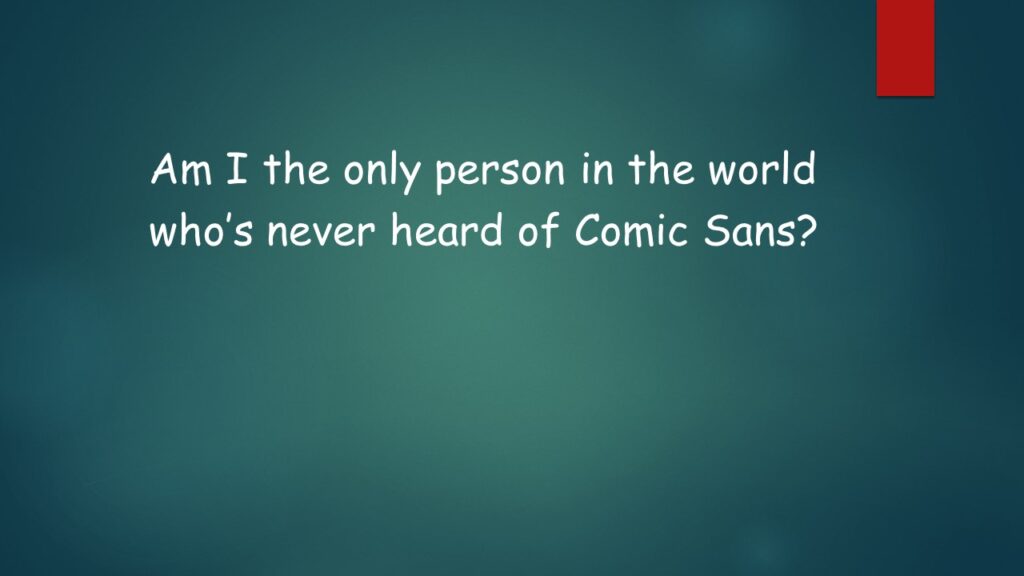
It appears I am the last person on the face of the earth to know what the ‘Comic Sans’ font is. And it’s already twenty-five years old, as of this week. In my own defense, I am not unfamiliar with type fonts and can spot a serif or lack of serif at twenty paces, but somehow the kerfuffle over the Comic Sans version has escaped my notice. If it has also escaped yours, you are clearly in good company. Let me enlighten you.
If you go to font selection area of your friendly, local, Microsoft Office pull-down menu and scroll down, past Bahnschrift, Bahnschrift Light, and all its other Bahnschrift relatives, skip over Bookman Old Style (doesn’t seem to be a ‘new style’ version), and ignore the entitled Calibri that always wants to be the default, you will find Comic Sans MS right there. It was there all along.
Comic Sans was invented in 1994 by a guy named Vincent Connare, who worked as a typographic engineer (I did not make this job up) at Microsoft. Fun fact: he was working on Melinda French’s project to create a bundled suite of software for dummies called Microsoft Bob. I know. I’ve never heard of it either. I guess Melinda’s job did not crash and burn when Bob bit the dust, because she went on to change her name to Melinda Gates.
Anyhow, Vince was appalled that Bob, whose avatar was a dog who was supposed to be a friendly and accessible companion to help you figure out how to process your words and manage your monthly budget, spoke in Times New Roman, the kind of typeface you would find on a memo from head office telling all staff there will be no raises this year, nor in the foreseeable future. In other words, not a kind and gentle sort of font. So, what Vince did is take a riff on the look and feel of the text you see in comic book speech bubbles, like what you see when Robin says, “Holy bunions, Batman!” The font he created is a little wonky, a little childlike, and definitely and unapologetically without serifs.
And all of this is a perfectly lovely story and that would have been the end of it. Until average Microsoft Office users (which did not include me, which I’m hoping makes me above average) caught on to it and started using Comic Sans with wild abandon. Lost kitten poster? Church bake sale? Business plan for your startup? Why the heck not. Why should Calibri have all the fun.
However, the graphic design community was not amused. They had (and continue to have) several meaty bones to pick with Comic Sans. It doesn’t kern, they said. It has too much space between the shoulder and stem of the letters, they said. It does not take itself seriously, they said. Although the originators of the “anything but Comic Sans” movement, have mellowed in the intervening years and now have a “please use Comic Sans” Facebook page, most typeface professionals would rather stare at the sun.
And that is our first world problem of the day. I will stick with Calibri when I’m sitting in my housecoat at three in the afternoon, trying my best to eek out something I might want to remain on my page du jour. I will transform my transformative words to Times Roman when I’m ready to send them out into the world. And I will let Comic Sans do whatever it wants.
